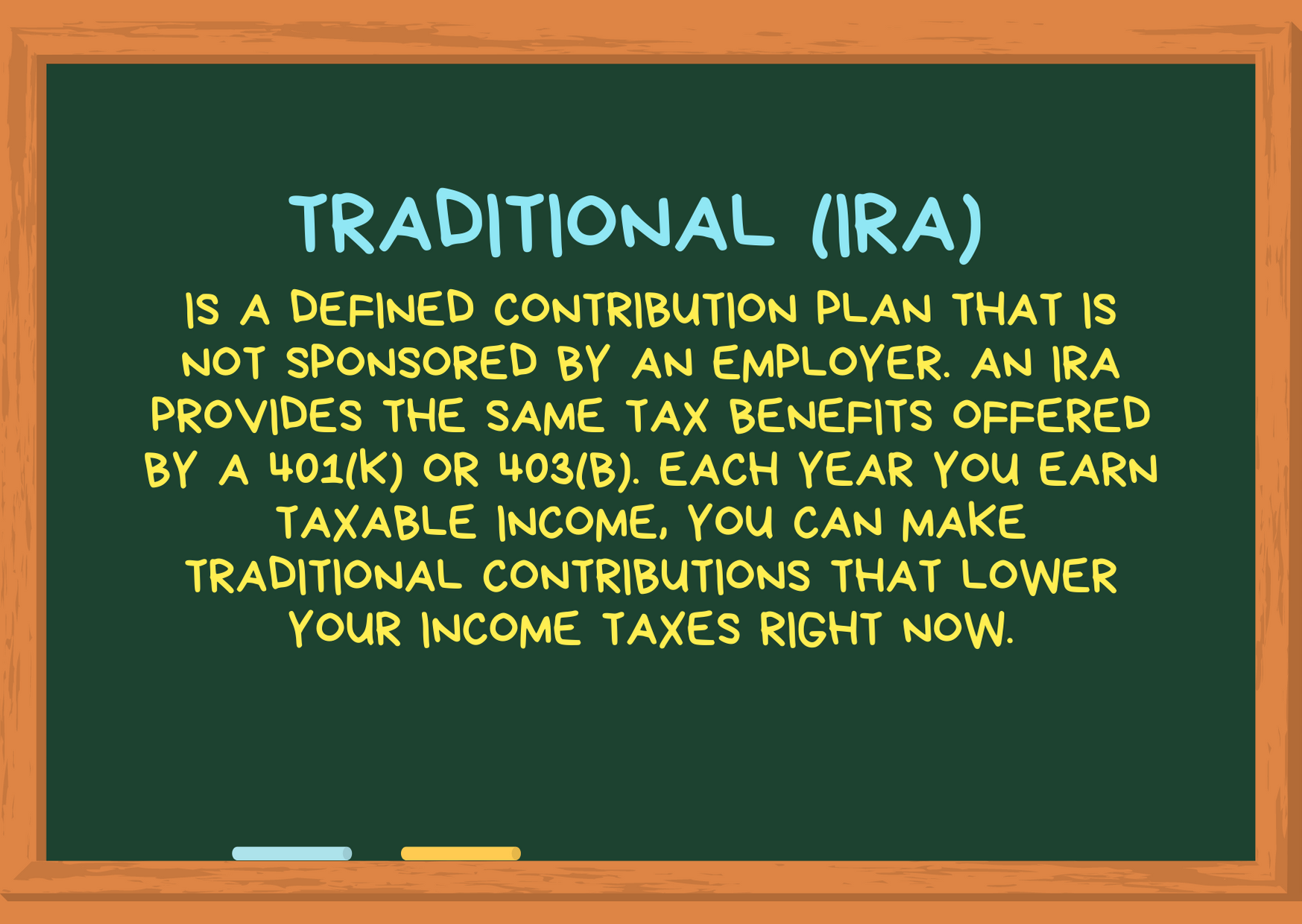An IRA is a tax advantaged retirement account that is not sponsored by an employer. Meaning, you can still receive similar tax benefits as a 401(k) even if your employer does not offer a retirement plan. Even if you participate in a retirement plan sponsored by your employer, you can still contribute to an IRA too! The one catch is you might be limited on the amount you can deduct taxes on, based on your income level but more on that later.
When it comes to retirement planning, you should take advantage of all the tax savings you can! So, you should try to max out your retirement contributions every year to get the most rewards. You can and should make contributions to an IRA if you received any taxable compensation throughout the year. Or, if you file a joint tax return with your spouse and they received taxable compensation you can contribute to a Spousal IRA. Because an IRA is an individual account, you and a spouse cannot share the same IRA. You both will need to open separate IRAs.
There are different types of IRAs –
Traditional IRAs defer taxes right now, meaning you lower your taxable income today. You can add more money right now and have more time for the money to grow. However, eventually you will have to pay taxes when you withdraw the money in retirement. Based on your income level, you may be limited on the amount of tax deductions you can claim.
Roth IRAs pay taxes upfront. When it comes time to withdraw your money in retirement, you will not have to pay additional taxes on the interest that you earned over the years.
Spousal IRAs only apply those who file a joint tax return where only one spouse is earning taxable income. Each spouse has the opportunity to make contributions up to the current annual limit regardless of if they were earning taxable income themselves.
SEP IRAs are also known as a simplified employee pension. This plan allows small businesses or self-employed individuals to participate in making contributions to employee’s retirement accounts. SEP IRAs only allow traditional contribution and therefore, you cannot make Roth Contributions. SEP IRAs allow for higher contributions than Traditional IRAs, but each employee must receive proportional contributions across the board.
SIMPLE IRAs are also known as a savings incentive match plan for employees. SIMPLE IRAs are specifically for small businesses with less than 100 employees and don’t really have other retirement plans available. SIMPLE IRAs only allow traditional contributions and therefore, you cannot make Roth Contributions. They are generally easier to maintain but offer lower contribution limits than SEP IRAs or other employer sponsored plans.
Setting Up an IRA –
Individual Retirement Accounts can be held anywhere that has approval from the IRS, not just with a local bank. IRAs can be set up with –
- Stockbrokers
- Mutual Funds
- Life Insurance Companies
- Banks and other Financial Institutions
Contributing to an IRA –
You have until April 15th every year to make contributions to your IRA for the previous year. (Make sure you finish all your contributions before filing your taxes!) Both Roth and Traditional IRA’s have income limits regarding your ability to contribute each year. Traditional IRA’s also have additional income limits that impact your ability to deduct contributions from your taxable income. These income limits are based on your adjusted gross income.
Excess IRA Contributions –
Excess IRA contributions occur when you contribute more than the allowed annul limit and when an improper rollover contribution is added to an IRA. Excess contributions hurt you because they are taxed at 6% every year that the excess contribution amount remains. You will need withdraw the excess contributions before you file your taxes to avoid paying the 6% tax.
You can apply the excess contribution from one year to a later year but only if the excess contributions are less then the max contribution limits for that year.
Withdrawing Specifications –
You can begin withdrawing funds once you reach the age of 59 1/2. Any withdraws made before will taxed heavily! Once you reach the age of 72, you are required to start taking distributions from your IRA.
Keep In Mind –
Understand that all investments have risks. But so does leaving your money hidden under your bed in a shoe box. Inflation is a silent killer of the value a dollar. If you are not investing your money at a rate that matches the rise of annual inflation (2.5%ish) then you are losing money.
Resources:
https://www.irs.gov/retirement-plans/individual-retirement-arrangements-iras
© EuduringFinances, 2021. All Rights Reserved.
Related Posts –










2 thoughts on “What Exactly Is An Individual Retirement Account?”
Comments are closed.